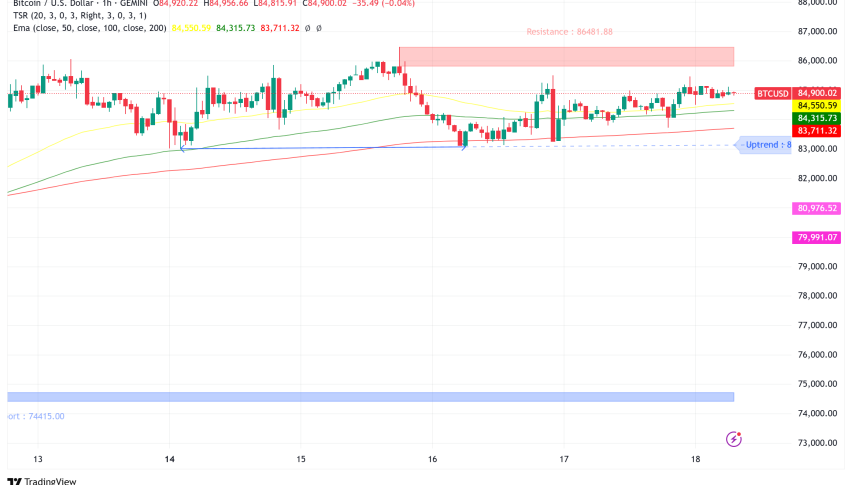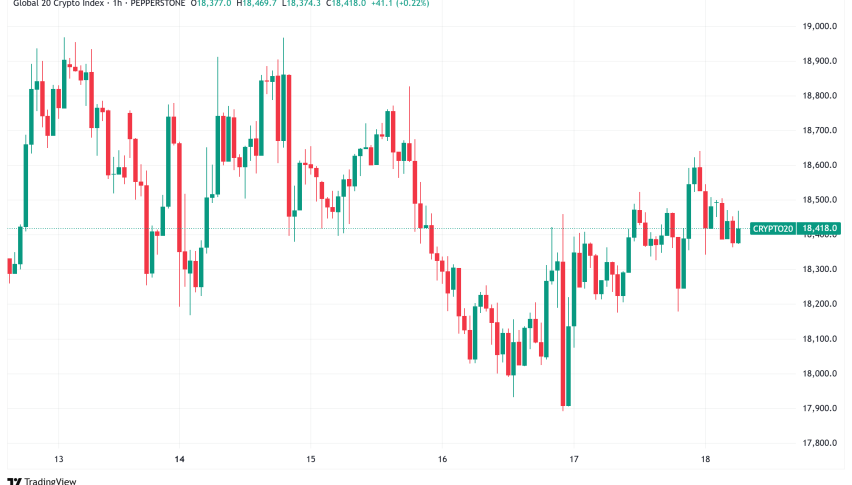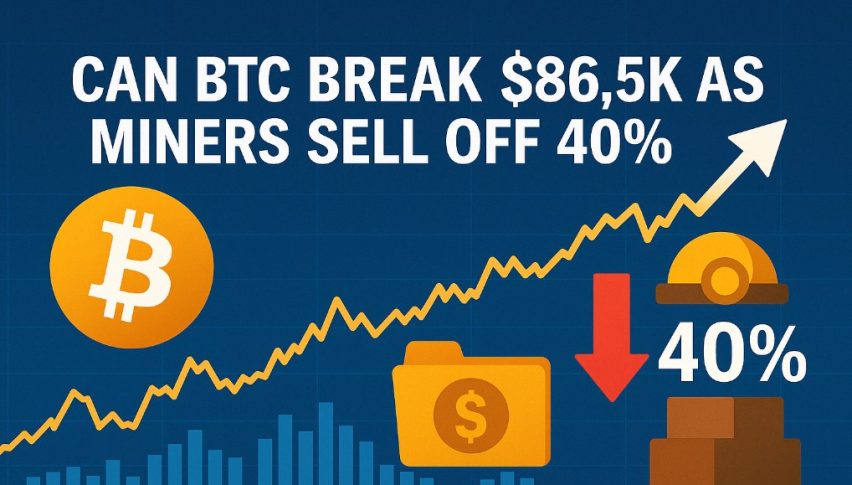Bitcoin (BTC) – Forecast Summary
| Bitcoin Forecast: End 2021 Price: $70,000 – $85,000 Price drivers: Market sentiment, Elon Musk/Tesla, China | Bitcoin Forecast: 1 Year Price: $120,000 – $150,000 Price drivers: War on cryptos, Crypto adoption, Safe haven status, Post COVID-19, Global economy | Bitcoin Forecast: 3 Years Price: $200,000 – $300,000 Price drivers: Positive risk sentiment, Crypto legalization, Bitcoin developments, Hawkish central banks |
There wasn’t much hype when Bitcoin came out about a decade ago, but now the crypto market is taking the world by storm, as cryptocurrencies are being adopted pretty well into normal life. El Salvador was the first country to adopt Bitcoin as a national currency in early September 2021. Other countries in Latin America are considering adopting Bitcoin as legal tender as well, such as Panama, Venezuela, Paraguay, etc. Bitcoin has been making decent gains as a result, climbing above $60,000 and now heading for the all-time high at $65,000. The sentiment has turned positive and Bitcoin is leading the market once again.
The surge in cryptocurrencies was strong during the first four months with Bitcoin topping at $65,000, but it stopped in May and in June was in the middle of a major bearish trend, which engulfed the cryptocurrency market, with the global establishment trying to crack down on it. China is taking a stand against cryptos and Bitcoin in particular, officially banning mining from a number of provinces. Although, Bitcoin is still alive and turning bullish, with a major support area around $30,000, while the ban made Bitcoin easier to mine, since it reduced the number of miners temporarily.
The big crash in BTC/USD came after this market exploded from January until April, as more big names entered this market, with Elon Musk and Tesla deciding to accept Bitcoin as payment, only to reverse course a while later and call it names. That started the rout, followed by the crackdown in China, which sent it down to 30,000 where it formed a support level and another one at $31,000. Eventually, both support levels were broken as Bitcoin continued down to $29,000.
But that was the low of the bearish wave, because since late July Bitcoin has been making solid gains, which suggests that the large bullish trend might be back on. The sentiment in the crypto market has improved, despite the global efforts to push them out and deter people from using them, with the second crash in September confirming that scenario. Crypto traders and investors saw the debate in the US Congress in the summer as bringing cryptocurrencies a step closer to the mainstream. This means making them more popular and despite possible taxation, the cryptocurrency market continued the bullish momentum.
Last year, the cryptocurrency market surged higher, particularly in the last three months of 2020 and they have turned bullish again since July. This could also be attributed to the safe-haven status which they have acquired. This means turning bullish in times of uncertainty around the globe and the comments about the new covid variant are keeping the momentum bullish in this market. Although, let’s see how far the crypto crackdown will go and how it will affect the market, which is getting used to it.
Recent Changes in the Bitcoin Price
| Period | Change ($) | Change % |
| 3 Months | +29,175 | +93.5% |
| 6 Months | -2,324 | -3.7% |
| 1 Year | +49,650 | +463% |
| 3 Years | +40,237 | +385% |
| 5 Years | +45,665 | +424% |
The Bitcoin price prediction and the technical analysis, which we will take a deeper look at in this forecast, point to further bullish momentum for the main cryptos, while the recent developments in Bitcoin are also positive in the long run. The sentiment in the digital currency market went from extremely positive to extremely negative in a matter of weeks from May until July, but in the last several weeks the sentiment has turned positive again. More countries are adopting and legalizing Bitcoin, such as El Salvador which did so a few days ago, with Paraguay. Venezuela and Panama looking to follow in those footsteps, while Bitcoin makes the political headlines in US and China, pushing it further into the mainstream.
Bitcoin Live Rate
Bitcoin Price Prediction for the Next 5 Years
Bitcoin Becoming Legal Tender Too?
Cryptocurrencies entered the financial markets slowly a decade ago, but they have been making their way through at an incredible pace in recent years. The total amount of the crypto market cam exceeds $2 trillion again, after dipping lower during the crypto crash in summer. Now countries are starting to adopt cryptocurrencies, so they are entering the fiat currency market as well. El Salvador became the first country to adopt Bitcoin in September, which was followed by a quick crash in Bitcoin and the crypto market as other forces try to keep their domain. The crash has stopped so that first introduction went smooth nonetheless.
Being legal tender doesn’t mean that all retailers should accept it, only for debt purposes it is obligatory. But the lawmakers in El Salvador passed a law that states that “every economic agent must accept bitcoin as payment when offered to him by whoever acquires a good or service.” They also introduced the national digital wallet, known as “Chivo,” Other countries in Latin America such as Venezuela, Paraguay, Panama and Mexico are also planning to adopt Bitcoin, as well as Malta, which will only increase the demand for Bitcoin.
Crypto Market Sentiment
The sentiment in the cryptocurrency market kept switching on and off in previous years, turning them bullish, then bearish again, until late 2020. That continues to be so, although with a lot more volatility and drama. Since October last year, the market sentiment turned quite positive for the crypto market as a whole, and it sent most cryptos to record highs. Looking back at the history, after the surge we saw in this market at the end of 2017, followed by the reversal at the beginning of 2018, the sentiment in the cryptocurrency market was mostly neutral until the beginning of 2020. As a result, the greater portion of the cryptocurrencies traded mostly sideways until the beginning of 2020. The sentiment improved in the cryptocurrency market at the beginning of last year, and they started to turn bullish in the first two months, but the outbreak of the coronavirus in Europe in late February turned the sentiment negative initially, sending altcoins crashing lower until the middle of March. That was the end of the decline for cryptos and we saw a sudden reversal back then. The sentiment in the crypto market was improving until May, but it reversed and Bitcoin lost more than half the value on the second crypto crash after the one in early 2018. China targeted Bitcoin mining in particular which turned the sentiment extremely bearish, but traders and Bitcoin holders seem to have gotten over that now and the sentiment has turned bullish again, sending Bitcoin above $45,000 now, after reversing down from $53,000 earlier in September.
The CIX 100 Crypto Index
This crypto index started in late 2018, and initially, it bounced up and down around 3,000 points until the end of October 2020, when the breakout happened. The announcement by Paypal to adopt cryptocurrencies as a means of payment on its platform helped the sentiment improve further in October, but the breakout came in November, and in January 2020, the CIX 100 index reached 5,000 points. Bitcoin was making the most of the positive sentiment in the crypto market during the first several months of 2021 and other altcoins, such as Ripple or Litecoin, also joined in the bullish run. But after the reversal, everything went downhill for three months, which has sent the crypto index 100 down as well. The 20 SMA was acting as resistance on the daily chart for some time but was broken. Although, the reversal has taken the price above that moving average again now. Bitcoin accounts for most of the crypto market, which means that this chart is showing the good performance of Bitcoin.
Has Bitcoin Become the New Gold?
Despite the strong bearish reversal in May, Bitcoin has taken a central role in the investment industry, acting as an investment asset and as a safe haven. At the end of 2017, the attention of the financial markets and the broader public turned to the cryptocurrency market for the first time, acknowledging it as a separate and important market. But, with 2020 turning out massively bullish for the cryptocurrencies and the upside sentiment continuing until May 2021 and then the big reversal, 2017 doesn’t look so dramatic anymore. Perhaps the crash that followed in 2018, after the surge at the end of 2017, was dramatic and this one looks similar too, but the crypto market will survive like Gold. The volatility in Gold has also increased immensely recently, so the it is resembling the price action in the crypto market. There might be a deep pullback, say from $ 65,000, where Bitcoin was trading by the middle of April, to $ 20,000 which was previously the ultimate resistance, after the break of $30,000. But, we don’t expect a reversal below $ 10,000 again.
The reason for this is that the status of the crypto market seems to have shifted. Digital currencies were considered a market with high risk, where traders would invest during times of positive risk sentiment, considering the high volatility and large spreads. Now, traders are turning to cryptocurrencies at times when the uncertainty is high, which makes them safe havens – and even more so than the traditional ones, such as the JPY or Gold, especially since the Japanese Prime Minister Shinzo Abe handed the resignation in August 2020. The uncertainty was really high in 2020, due to the coronavirus, the economic meltdown, US politics etc. Everything became too risky to buy, except for stock markets perhaps, which benefited from all the stimulus programmes by governments and central banks around the world.
The cryptocurrency market had a massively bullish year, absolutely on its own merit. With the risk becoming too high for normal currencies, traders and investors turned to the crypto market, thus giving it safe-haven status. The bullish trend in gold and silver ended in August 2020, while cryptocurrencies, and Bitcoin in particular, have been positively surging. This has attracted major investors
Bitcoin, the Market Leader in Cryptocurrencies
As we explained above, the digital currency market turned extremely bullish in the last few months of 2020 until May 2021. The crypto market finally reached the $1 trillion mark, which seemed a long way off at the beginning of 2020. In October of 2020, the total market cap for the whole crypto market was only around $330 billion, which was just a third of the value three months later, while in May it reached more than $2.5 trillion. The market capitalization of Bitcoin as of 14 January 2021 was a whopping $1.213 trillion, which accounts for the lion’s share of the entire market, at nearly 50%.
Bitcoin has been the leader in the crypto market since the beginning, since it was the first digital currency to go live. There have been many ups and downs, with new coins coming out of Bitcoin’s hard forks, and scandals etc, but Bitcoin has maintained its status as the leader in this new market, and in fact, it has strengthened its status with the latest surge, increasing the difference in value and the market cap compared to other cryptocurrencies. It was Bitcoin indeed, that started the surge in 2017, and again in 2020. As the leader in the crypto market, Bitcoin also attracts the biggest investments.

Bitcoin has outperformed all other markets
Besides being an investment target for traders who like to invest in risky assets, since Q4 of 2020, Bitcoin attracted large funds from big investment companies and private and public institutional investors, making its foundations even more solid. In fact, the rally of the first several months of 2021 has mainly been driven by large institutional investors, such as MassMutual which bought $ 100 million Bitcoin in December 2020, Skybridge Capital which invested $182 million, also in December, and Guggenheim, which filed to invest up to $ 500 billion or up to 10% of its $ 5 billion macro fund in Bitcoin. This suggests that the decline won’t last forever since this is big money, invested for the long run.
Possible Downsides to the Bitcoin Surge
While the performance of cryptocurrencies was great during the surge in 2021, there are some factors that might restrict or slow further gains for Bitcoin, especially now after the decline. The crackdown that China is doing for cryptocurrencies in general and particularly for Bitcoin mining is weighing on the entire market. China has been a major playground for cryptocurrency mining, but now it seems like the whole People’s Party is out to get Bitcoin. Although, other countries like El Salvador, Paraguay, the state of Florida, and whoever might come next are legalizing Bitcoin. The taxation that’s coming in the US might also be a negative factor for Bitcoin, but for now the market hasn’t minded much, while Bitcoin benefited in fact, from all the talks about it in the US Congress, which brought Bitcoin further to the mainstream.
Besides the safe-haven status that Bitcoin has acquired in the past year, one of the main reasons for the surge was the fact that fiat currency has been flowing extensively. Governments and central banks have been throwing cash through the monetary and fiscal stimulus programs and some portion of this cash has been flowing into the crypto market. But, while banks and governments won’t turn the tap off in 2021, they are not likely to increase the packages further, from what has been announced so far. But they might hint at starting to end these programmes by 2022, which will have a negative effect on the cryptocurrency demand.

The mining difficulty has increased together with the surge in the price
Another factor that might weigh on Bitcoin’s bullish momentum in the months ahead is the difficulty involved in mining. As Bitcoin becomes more expensive, the mining revenue has increased, having tripled since August. But, this has attracted many more miners to the game, especially large scale institutional ones, such as mining firms like Riot Blockchain (RIOT) and Marathon Patent Group (MARA), which placed similar pre-orders for 31,000 and 90,000 machines respectively in 2020. Manufacturers of mining machines are not able to keep up with the demand, which has contributed to increased difficulty in mining. The chart above shows that as Bitcoin headed for $ 40,000, the difficulty rose to above 20 trillion, and it will continue to grow, which will be a burden for Bitcoin, in terms of keeping up the pace of the increase in the long run. Nonetheless, the Bitcoin price prediction for the coming quarters remains bullish.
Aave (AAVE) 2022-2024 Price Prediction: Rising Popularity of DeFi Driving the Bullish Trend
Ethereum (ETH) Price Prediction For 2022: The $5,000 Level is the Next Target
Bitcoin Technical Analysis – BTC/USD Begins A Bullish Reverse

Dojis have been great trade signals for Bitcoin
Looking at the monthly Bitcoin chart, we see that the price was trading in a very tight range for several years, until early 2017, apart from a jump in late 2013, which cooled off pretty quickly. That shows that the attention on digital currencies was low until it surged in 2017. Moving averages were providing support, but they lost touch with the price in 2017, although after the reversal in 2018, the 50 SMA took up that job again and stopped the decline. A bottom was put in place for Bitcoin above $ 3,000, and we saw a bounce to $ 13,847 in 2019. The bounce didn’t last though, and for the next year, the trend turned bearish once again, as Bitcoin headed for $ 3,000, after the initial coronavirus crash. But, the moving averages held, despite being pierced, and the big bounce began taking Bitcoin to nearly $65,000 in April 2021. Although, the crash came for Bitcoin after it formed a big doji candlestick in April, which signaled the big reversal in the following two months.
The 50 SMA is providing support now for Bitcoin
On the weekly chart above, the 200 SMA (purple) was the ultimate support for Bitcoin, although moving averages and previous support and resistance levels lost importance during the surge, as buyers were not waiting for them to catch up, preferring to trade on pure sentiment. But, the crash came after another doji candlestick on this chart as well and after the 20 SMA (gray) was broken. Although, the 50 SMA (yellow) turned into support after it caught up around $30,000 with Bitcoin, which is a major support area in itself. The price bounced off that moving average and the 20 weekly SMA has turned into support now, so let’s see if it will keep Bitcoin bullish in the coming weeks.

The 100 SMA are supporting Bitcoin after the $10,000 crash
On the daily chart, the 20 SMA held as support in November 2020, after the first surge in October, and since the break of the $ 20,000 level in December, Bitcoin didn’t look back. But the reversal came and moving averages were being broken one after another on the daily timeframe. The 200 SMA (purple) turned into resistance at the top as Bitcoin was trading in a range between the low around $30,000 and the top above $40,000. Although, the 200 SMA turned into support right after it was broken on this timeframe, and continues to hold well. Now, after this retreat BTC/USD seems ready for the next bullish move.






